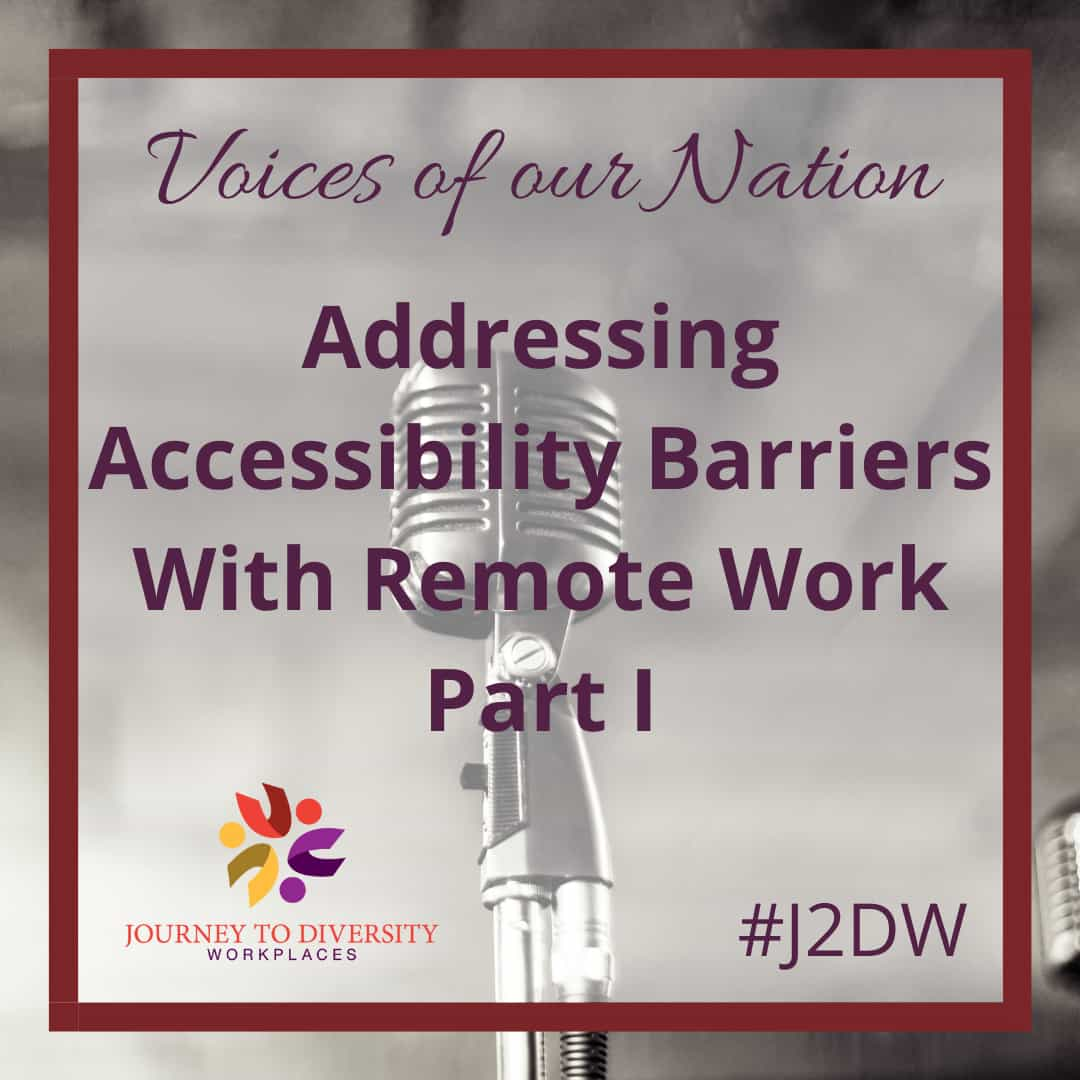This blog post will be one of two articles on disability and remote work. This entry focuses on some of the accessibility barriers disabled employees face in the workplace, and how the normalisation of remote work has helped to overcome many of those barriers. The second blog post will consider what it means for disabled employees to return to in-person work now that many workplaces are adopting a hybrid model or mandating a return to the physical workplace.
More than two years into the COVID-19 pandemic, the shift to remote work has become a “new normal,” with many Canadians having adjusted to a work-from-home setting. But for many disabled employees, the opportunities that have arisen as a result of this shift are considerable.
The fact is, disabled employees have long been advocating for the right to work (Peng & Kiessel, 2020), but for the most part they’ve been turned down. This is partly because many employers believe that allowing for remote work will give disabled employees an unfair advantage over their able-bodied coworkers.
Despite the rising inclusivity in many work settings, some disabled employees may feel hesitant to ask for further considerations out of fear that they are asking too much, and should simply be grateful for those accommodations they have received. Well-meaning supervisors might still have overlooked efforts to make the workplace more accessible, simply by failing to consider the extent of accommodations that disabled employees really need. And that’s without considering the fact that most office buildings, especially old buildings, are designed without disabilities in mind. Employers might install access ramps, but that doesn’t change the unfortunate reality-that a building’s doorways might not be wide enough to allow passage for wheelchairs. Even the commute to get to work usually comes with barriers, such as a lack of elevators at some subway stations.
In Canada, the rights of disabled employees are protected under the Employment Equity Act (Canada.ca), but unfortunately, stigma toward disabled people remains, creating considerable barriers to equal employment opportunities. The belief that disabled people are less qualified or incapable of performing their duties as effectively as their able-bodied counterparts is a common one. And when it comes to the physical workplace itself, accommodations for disabled employees, like the provision of special chairs or modified work hours, are seen as too expensive or too complicated to manage.
Legislation doesn’t change the fact that disabled Canadians are disproportionately unemployed compared to able-bodied Canadians. The numbers speak for themselves: a 2017 survey by Statistics Canada found that there are approximately 645,000 disabled Canadians over the age of 15 who have the potential to work and yet are not currently employed. In the 25-64 age group, 80% able-bodied people are employed, whereas only 59% of disabled people in the same age range are employed (Morris et al., 2018).
Now that the world has largely shifted to working from home, many of those barriers have been reduced or have vanished completely for disabled employees, opening up opportunities that didn’t exist before the pandemic. Many disabled employees expressed that they could focus more easily and be more productive at work when given the opportunity to customise their workspaces to accommodate their needs freely (Peng & Kiessel, 2020). People with chronic pain, for example, can work in a setting that suits them best without having to sit for long periods of time in uncomfortable office chairs. Some able-bodied people believe that an employee needs to sit at a desk in order to be productive and to fit a certain image of professionalism, but that isn’t always the most comfortable setup for those with chronic pain.
When it comes down to it, there is a great deal of freedom to be found for disabled people in not having to request an employer who holds a position of power over them for special accommodations. Plus, it’s worth noting that many disabilities are invisible, and employees are not required to disclose their disabilities to an employer (although they still need to self-identify as disabled in order to count as a member of those groups protected by the Employment Equity Act). Remote work opens up further opportunities in this regard.
The removal of transportation and physical accessibility barriers is one obvious benefit to be reaped from remote work. In particular, those with pain and mobility-related disabilities are likely to benefit from not having to commute to an in-person workplace. But beyond that, thanks to remote work, people with all sorts of disabilities are able to work in an environment that best suits their needs.
The virtual nature of remote work allows employees to use assistive technology more easily than they might have done in the office. For example, Zoom’s closed captions function is enormously beneficial during meetings to employees who are Deaf or Hard of Hearing. Text-to-speech software serves to benefit employees with visual disabilities, speech disabilities, and learning disabilities like dyslexia The ability to work in a customised environment at home also benefits neurodivergent employees by removing the risk of sensory overload at the office. Some workplaces ban sensory tools like fidget spinners because of a lack of understanding of how neurodivergent people function best, but working at home allows people with ADHD to use them freely to improve focus and reduce stress.
Remote work is not a universal, permanent solution to the discrimination disabled people face when it comes to employment, nor should it exempt employers from continuing to implement inclusive practices and from making their workplaces accessible. We certainly shouldn’t use the possibilities presented by remote work as an excuse not to hold employers accountable for discriminatory behaviour. Education around disability that emphasises listening to disabled voices should become normalised regardless of whether people are working from home or from the office. But leaving the option open for remote work is one major way in which employers can ensure the equality of disabled people working in Canada and contribute to a more diverse workforce.
Sources
Farrer, L. (2022, March 30). Accommodating Disabilities In Remote And Hybrid Work. Forbes. Retrieved July 14, 2022, from https://www.forbes.com/sites/laurelfarrer/2022/03/30/accommodating-disabilities-in-remote–hybrid-work/?sh=3ecfde0f2c17
Government of Canada. (n.d.). Employment Equity Act. Justice Laws Website. Retrieved July 14, 2022, from https://laws-lois.justice.gc.ca/eng/acts/e-5.401/page-1.html
Howard, J. (2022, March 22). The benefits of remote work for people with disabilities. InclusionHub . Retrieved July 14, 2022, from https://www.inclusionhub.com/articles/benefits-of-remote-work
Morris, S., Fawcett, G., Brisebois, L., & Hughes, J. (2018, November 28). A demographic, employment and income profile of Canadians with disabilities aged 15 years and over, 2017. Statistics Canada. Retrieved July 14, 2022, from https://www150.statcan.gc.ca/n1/pub/89-654-x/89-654-x2018002-eng.htm#a5
Peng, J., & Kiessel, L. (2020, October 27). For those with disabilities, shift to remote work has opened doors (video). The Christian Science Monitor. Retrieved July 14, 2022, from https://www.csmonitor.com/Business/2020/1027/For-those-with-disabilities-shift-to-remote-work-has-opened-doors-video
This article was written by summer student Cossette Penner-Olivera and edited by summer student Ilesha Prabhudesai. This article was funded by the Government of Canada.


